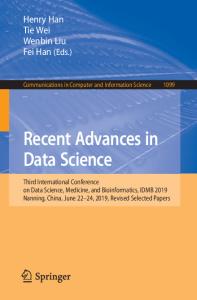Generation of SAR Images Using Deep Learning
- PDF / 1,345,734 Bytes
- 9 Pages / 595.276 x 790.866 pts Page_size
- 12 Downloads / 503 Views
ORIGINAL RESEARCH
Generation of SAR Images Using Deep Learning Sai Raghava Mukund Bhamidipati1 · Chinmaya Srivatsa1 · Chethan Kanakapura Shivabasave Gowda2 · Srikanth Vadada3 Received: 10 August 2020 / Accepted: 2 October 2020 © Springer Nature Singapore Pte Ltd 2020
Abstract Synthetic aperture radars (SAR) are a type of high-resolution radars that are used for terrestrial and airborne imaging. They use a moving source to simulate a large antenna aperture, thereby providing a high-quality map of the surroundings. They are popular due to their wide variety of applications in airborne naval and defense systems as well as topography and seismology. In defense applications, they are mainly used for reconnaissance and mapping of enemy targets such as armored vehicles, tanks, and runways. In recent times, there has been a heavy need for machine learning algorithms that are capable of automatically recognizing the targets detected by the SAR without human input. Such algorithms demand large-scale labeled datasets for training, validation and testing. Due to the nature of the SAR, acquisition and collection of these labeled datasets is quite a tedious and expensive task requiring a lot of man hours. Thus, alternate methods to produce new SAR image data are needed. In this paper, generative adversarial networks (GAN) are used to generate new spotlight SAR images from a limited pre-existing dataset. To quantitatively verify the effectiveness of the images produced by the GAN, a novel convolutional neural network (CNN) is devised and trained on the Moving and Stationary Target Acquisition and Recognition (MSTAR) dataset images. Keywords Deep learning · Generative adversarial networks · Synthetic aperture radar
Introduction The integration of systems with Machine Learning and Deep Learning algorithms enable them to perform various tasks autonomously. This philosophy has proven very effective in recent times, as these algorithms have shown robust
This article is part of the topical collection “Computational Statistics” guest edited by Anish Gupta, Mike Hinchey, Vincenzo Puri, Zeev Zalevsky and Wan Abdul Rahim. * Chethan Kanakapura Shivabasave Gowda [email protected] Sai Raghava Mukund Bhamidipati [email protected] Chinmaya Srivatsa [email protected] Srikanth Vadada [email protected] 1
PES University, Bengaluru, India
2
RV Institute of Technology and Management, Bengaluru, India
3
LRDE, DRDO, Bengaluru, India
performance on tasks such as Optical Character Recognition (OCR), Scene Recognition and Full Self Driving. In this paper, Deep Learning has been integrated with SAR images to augment the radar’s functionality. In "Related Work", a detailed study of relevant literature is performed and key learnings are listed. "Methodology" deals with the methodology behind the designing of the GAN architecture used to produce new SAR images, as well as the novel CNN architecture capable of classifying SAR images with high accuracy. The latter will further be employed to evaluate the performance of
Data Loading...











